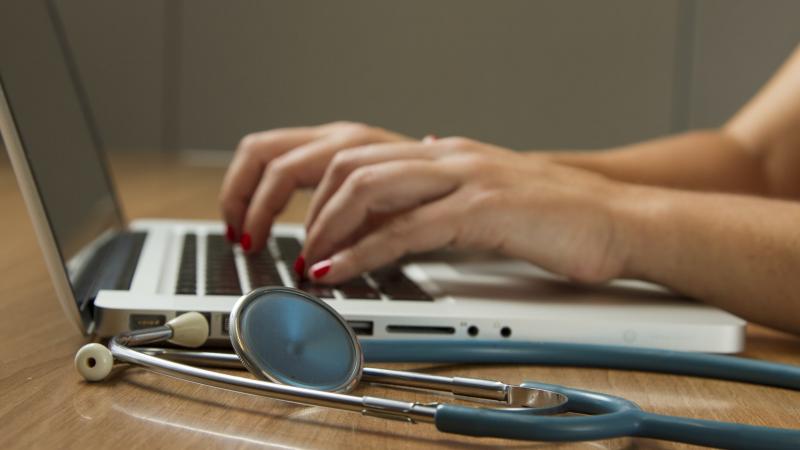Telemedicine Security: How to Secure Your Remote Medical Practice

The COVID-19 pandemic poses many challenges for healthcare professionals. However, with the help of technology and the possibilities of remote working, many medical offices are able to continue to offer their services in a secure manner. Health professionals adapt to circumstances, requiring masks and regular sanitary procedures on site, but also by offering remote telemedicine services.
In fact, telemedicine is becoming a major trend during the pandemic. Video conferencing technology and other tools allow physicians and healthcare professionals to schedule patient appointments from their own homes. Although not as effective as face-to-face examinations, telemedicine provides much needed advice, care and remote monitoring to high-risk patients.
However, there are several cybersecurity threats to the practice of remote medicine. Practitioners may not access confidential data in a secure manner, which puts them and their patients at risk of a data breach. This situation is not only dangerous for doctors and patients, but could constitute a violation of HIPAA regulations. It is essential that healthcare professionals working from home use secure connections to access data and view patient records.
For those planning on setting up a remote medical office, here are five ways to make sure you can safely practice telemedicine:
1. Set Up a VPN to Secure Data Access
A virtual private network (VPN) provides a secure connection to on-premises servers over an Internet connection. Companies are setting up VPNs to allow their employees to access their work networks remotely, no matter where they are located.
A VPN can offer many benefits. It can increase online security and defeat hackers. It can even allows people to avoid online censorship (for example, many internet users in China use VPNs to visit blocked websites. They call VPNs "翻墙软件" in Chinese). A VPN works by securing the connection between the user and the servers, as if it were a tunnel enveloping any information sent by the VPN. It also encrypts all files that pass through the network, so that even if the data is intercepted by an unauthorized user, that user will not be able to read the file.
You can choose a VPN service provider by visiting a good VPN review website. To set up a VPN, work with a remote network security professional who can set up a network that will work best for your practice.
2. Remove BYOD Policies and Opt For Company-Supplied Devices
Bring-Your-Own-Device policies have their benefits, but when running a remote medical business, it's important to prioritize safety for you and your patients.
Healthcare data is very valuable to hackers, so it is wiser to work from company-provided devices, which can be maintained and managed securely in accordance with HIPAA regulations, rather than from personal devices. Company-supplied devices can be customized to only allow access to certain sites, prevent downloading of unauthorized programs, and monitor any potential security threats.

3. Make Sure Your Internet Connection Is Secure and Has the Correct Bandwidth and Connectivity
The security, speed and bandwidth of your internet connection should be checked to ensure that your devices can access data securely. You should also install anti-virus and anti-theft software to minimize the risk of data breach.
Adequate network speed and bandwidth ease your business demands and allow you to securely perform tasks such as videoconferencing with patients without your internet being cut off. While commercial internet speeds are generally quite high, some home network speeds are too slow for work needs and could be easily intercepted by a threatening actor.
4. Implement Multi-Factor Authentication
Multi-factor authentication (MFA) is a security measure that protects accounts against hackers. The AMF involves several security steps to access a device or an account. When a user tries to log in, they must provide additional information other than their username and password.
For example, he may be asked a series of personal questions (decided by him) to which no one else knows the answers. Fingerprint scanning is a more modern example, frequently used with mobile technology. Another second authentication factor can be a text code sent to your mobile device.
The AMF prevents about 99.99% of attempted hacking accounts. It adds depth to security measures, keeping your devices and accounts safe, and should be added to all accounts and devices.
5. Avoid Social Engineering Attacks
Phishing is a type of scam where hackers try to trick you into sending them your personal information. This is usually done by email, text or social media. The scammer claims to represent a trusted source, such as a bank or subscription service, and asks you to confirm your account information, click on a link, or download an attachment.
When you click on a phishing link or attachment, it often contains malware that infects your device and compromises your data. Trusted companies will probably never ask you for personal information directly in an email, so it's best to avoid such requests entirely.
Carefully review all messages and be wary of people asking you to share information online. Look for red flags like incorrect grammar, weird sender addresses, and links that look like legitimate business addresses (like amaz.on.com instead of Amazon.com).
Conclusion
As your doctor's office finds ways to take advantage of technology and help patients more effectively during these difficult times, maintaining safety is essential. By implementing these 5 best practices for remote security, your practice will be well positioned to defend against the latest remote threats.
More to Read:
Previous Posts:








